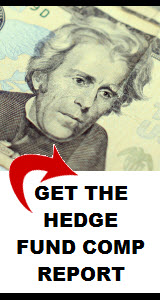Last time, we looked at what managed futures are, and the commodity trading advisors (CTAs) that operate these types of hedge funds. Today we’ll look at why a qualified or institutional investor would want to use them.
Managed futures have historically shown a very low correlation with more traditional asset classes such as stocks and bonds. Thus, adding managed futures to your portfolio has the potential to reduce overall risk and volatility.
You buy a future to add a type of risk to your portfolio, either to speculate or to diversify. You sell a future to remove a risk, such as to hedge market price movement.
Jaeger offers the example of the corn farmer, who faces the risk of falling corn prices, and the cereal manufacturer who faces the risk of rising corn prices. The corn farmer can reduce risk by selling or shorting corn futures, while the cereal manufacturer can reduce risk by buying corn futures. If the price of corn goes down, the farmer will have profits in his short futures position to offset the decline in the value of his crop. If the price of corn goes up, the losses on his futures position will be offset by the increase in the value of his crop. The same process would work, in reverse, for the cereal manufacturer.
Thus, the futures market is a “zero-sum” game. For every long position, there is a corresponding short position. For every winner, there is a loser. This is a fundamental difference from the stock and bond markets, where long positions do not necessarily need a corresponding short position or losing investor.
The lack of correlation with traditional asset classes also means that managed futures hedge funds can be an “absolute return” strategy. It can often deliver positive returns even while the stock and bond markets are tanking.
For example, the risk-adjusted returns for managed futures between January, 1980, and May, 2003, was less volatile than the S&P 500 Index. During that period, the “drawdown”, a term CTAs use to describe the maximum peak-to-valley drop in performance, was -15.7% for managed futures, whereas the drawdown for the S&P 500 index was -44.7%.
More recently, managed futures were among the top-performing strategies in the hedge fund world, gaining 18% in 2008 while many other hedge fund strategies lost money.
Evaluating Commodity Trading Advisors
If you are interested in investing with or working for a CTA, there are some important metrics to look for. These include:
– Trading strategy or style: what type of trading program does the CTA use? Is he a trend follower, who uses proprietary technical or fundamental computerized trading systems to uncover signals of when to go long or short in a certain commodity? Or does he follow a market-neutral strategy, looking to profit from the spread between different commodity markets?
– Drawdowns: as noted above, a drawdown is a “worse case” peak-to-valley scenario. This is the manager’s largest cumulative decline in a trading account. It’s not necessarily an indicator of future results, of course, but it does provide a way to gauge risk and performance.
– Annualized rate of return: CTAs must update their disclosure documents to qualified investors at least every nine months. Like any other investment fund, this annualized rate of return provides another useful way to judge performance.
– Dispersion: this is the variation of monthly and annual performance data from a mean or average level. Dispersion can give you an indication of volatility. For example, one manager’s annualized rate of return might be 25% and look attractive until you consider his average drawdown rate of -35% a year. While another CTA who achieved a 10% annualized rate of return may have an average drawdown of only -2% a year, considerably less volatile and potentially a better risk-reward for a given investor.
Unique Returns
Managed futures offers a risk-return profile that differs from more traditional assets as well as other alternative asset classes. It can provide unique opportunities for hedge fund investors both by trading in a wide variety of global commodities and derivatives, as well as having the flexibility to invest in either long or short positions. It’s a good example of using professional investment managers with highly specialized knowledge to obtain an optimal risk/return profile for a portfolio.
References:
Center for International Securities and Derivatives Markets
Logue, Ann C., Hedge Funds for Dummies: A Reference for the Rest of Us. Wiley Publishing.
Jaeger, Robert A. All About Hedge Funds: The Easy Way to Get Started. McGraw-Hill.






Comments on this entry are closed.